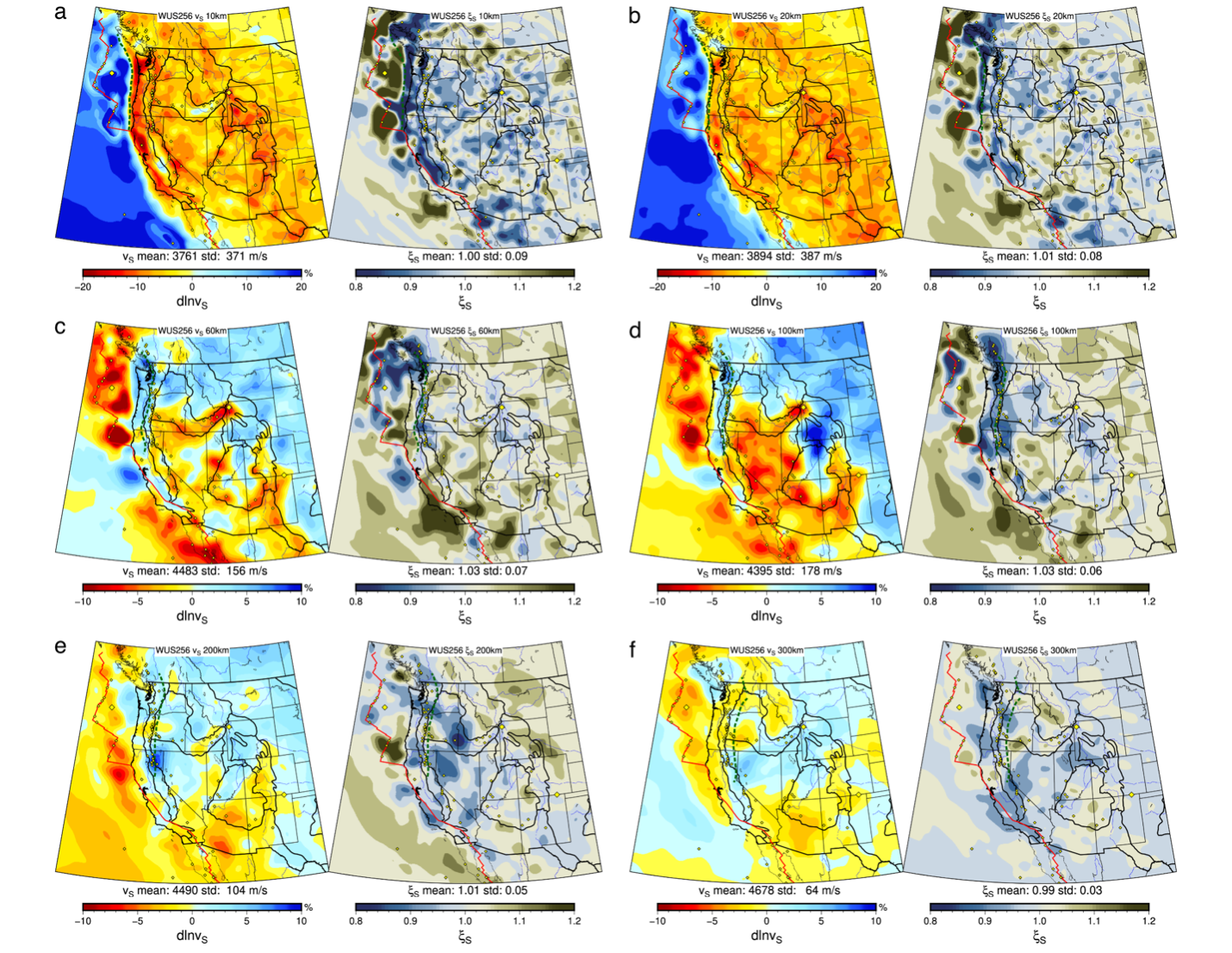Summary
WUS256 is a model of radially anisotropic crustal and upper mantle seismic structure of the western United States from adjoint waveform tomography.
Quicklinks
Description
| Name | WUS256 | ||
| Title | A 3-D adjoint waveform tomography model for the western United States | ||
| Type | 3-D Tomography Earth Model | ||
| Sub Type | Full waveform model including wave speed, density and attenuation | ||
| Year | 2022 | ||
| Data Revision | r0.0 (revision history) | ||
| Short Description | WUS256 is a model of radially anisotropic crustal and upper mantle seismic structure of the western United States from adjoint waveform tomography. It is based on a multiscale inversion strategy with 8-stages and many iterations (256). WUS256 provides significantly improved waveform fits in the period band 20-120 seconds relative to the starting and several other models. | ||
| Authors: | Arthur Rodgers, Lawrence Livermore National Laboratory, Livermore, CA, USA Lion Krischer, Mondaic, Zurich, Switzerland Michael Afanasiev, Mondaic, Zurich, Switzerland Christian Boehm, Mondaic, Zurich, Switzerland Claire Doody, University of California Berkeley, Berkeley Seismological Laboratory Andrea Chiang, Lawrence Livermore National Laboratory, Livermore, CA, USA Nathan Simmons, Lawrence Livermore National Laboratory, Livermore, CA, USA |
||
| Previous Model | SPiRaL |
Reference Model | N/A |
| Model Download | WUS256.r0.0.nc (see metadata) in netCDF 3 Classic format with parameters (units):
|
||
| Depth Coverage | 0-400 km | ||
| Area | Western United States (28°/52°, -132°/-100°) | ||
| Data Set Description | WUS256 is based on inversion of over 94,000 waveforms from 72 earthquakes fit to the period band 20-120 seconds (Rodgers, 2022). | ||

Citations and DOIs
To cite the original work behind this Earth model:
- A. Rodgers, L. Krischer, M. Afanasiev, C. Boehm, C. Doody, A. Chiang, N. Simmons (2022). WUS256: An Adjoint Waveform Tomography Model of the Crust and Upper Mantle of the Western United States for Improved Waveform Simulations, J. Geophys. Res., https://doi.org/10.1029/2022JB024549
- Rodgers, Arthur. (2022). Dataset for “WUS256: An Adjoint Waveform Tomography Model of the Crust and Upper Mantle of the Western United States for Improved Waveform Simulations” [Data set]. Zenodo. https://doi.org/10.5281/zenodo.6418105
To cite IRIS DMC Data Products effort:
- Trabant, C., A. R. Hutko, M. Bahavar, R. Karstens, T. Ahern, and R. Aster (2012), Data Products at the IRIS DMC: Stepping Stones for Research and Other Applications, Seismological Research Letters, 83(5), 846–854, https://doi.org/10.1785/0220120032.
DOI for this EMC webpage:
https://doi.org/10.17611/dp/emc.2022.wus256.1
Credits
- r0.0 model provided by Arthur Rodgers.
Revision History
revision r0.0: uploaded July 19, 2022.
Timeline
- 2022-08-03
- online






